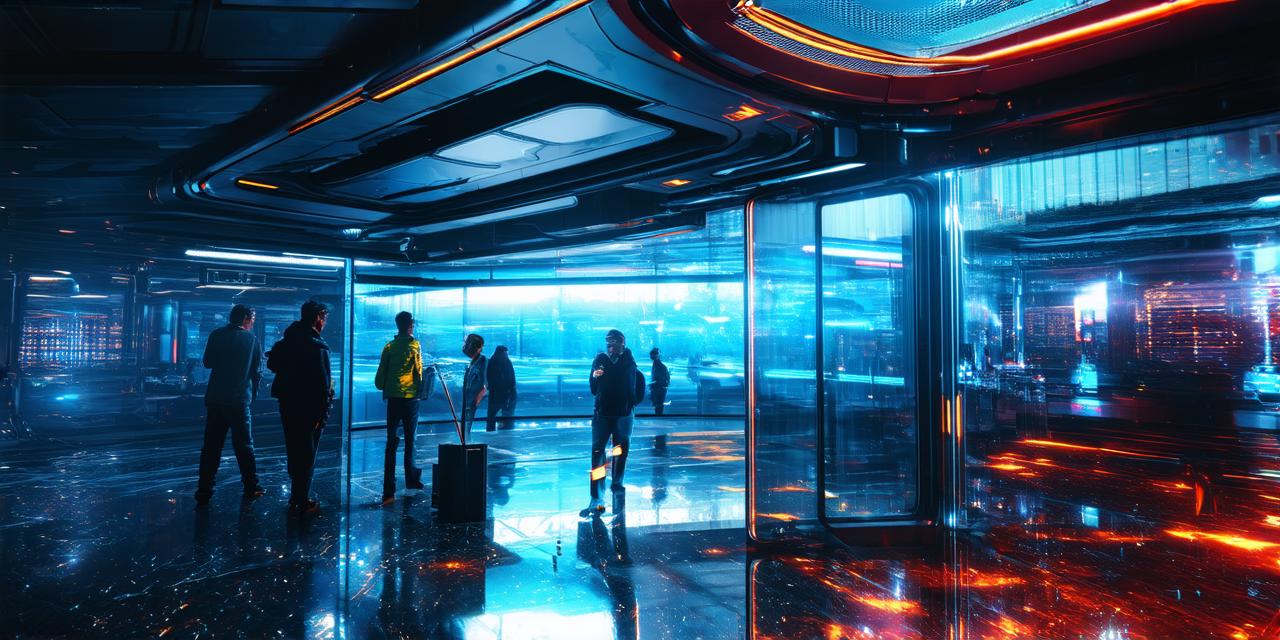Augmented reality (AR) is a rapidly growing technology that allows us to enhance our real-world surroundings with digital elements. AR applications can be used in various industries, such as gaming, education, healthcare, and marketing.
What Is Augmented Reality?
AR is a technology that overlays digital information onto the real world. It uses sensors and cameras to track the user’s location and orientation in space, allowing the software to accurately place digital objects into the user’s field of view. This creates an immersive experience where the user can interact with both physical and digital elements simultaneously.
AR has been around for over a decade, but it was not until the launch of Apple’s ARKit and Google’s ARCore platforms in 2017 that it became widely accessible to developers. Since then, we have seen a surge in the number of AR apps available, with gaming and education being two of the most popular use cases.
How Does Augmented Reality Work?
AR works by combining real-world data with digital information to create an interactive experience. The software uses sensors and cameras to track the user’s location and orientation in space. This data is then used to overlay digital objects onto the real world, creating a seamless blend of physical and digital elements.
There are two main types of AR: marker-based and markerless. Marker-based AR requires the user to scan a physical object, such as a QR code or image, using their camera. The software then uses this information to place digital objects onto the real world. Markerless AR, on the other hand, does not require any physical markers. Instead, the software uses the user’s location and orientation data to place digital objects into the user’s field of view.
AR is a powerful tool that has the potential to revolutionize various industries. In gaming, AR allows players to interact with their environment in new and exciting ways. For example, the popular game Pokémon Go uses AR to allow players to catch virtual creatures in real-world locations. In education, AR can be used to create interactive learning experiences that engage students and enhance their understanding of complex concepts.
Case Studies: How Augmented Reality Is Being Used in Real Life

There are many examples of how AR is being used in real life. One of the most popular use cases is in gaming. Pokémon Go, as mentioned earlier, has been a massive success and has inspired other developers to create their own AR games. Another example is the game Ingress, which uses AR to turn the real world into a virtual battlefield.
AR is also being used in healthcare. For example, the app Aurasma can be used by doctors to overlay digital information onto a patient’s body, allowing them to better understand and diagnose medical conditions. In addition, the app Vuforia can be used to create 3D models of surgical procedures, which can help surgeons plan and practice their operations before performing them on patients.
AR is also being used in marketing. For example, the app Snapchat uses AR filters to allow users to add digital elements to their photos and videos. This has become a popular way for brands to engage with their audience and create memorable experiences.
Why Should You Care About Augmented Reality?
There are many reasons why you should care about augmented reality. One of the most significant benefits is that it allows us to interact with both physical and digital elements simultaneously, creating a more immersive experience. This has the potential to revolutionize various industries, such as gaming, education, healthcare, and marketing.
AR can also help us better understand complex concepts by providing an interactive and engaging learning experience. For example, the app Anatomy 4D uses AR to allow students to explore the human body in a three-dimensional environment. This has been shown to improve student understanding and retention of the material.
In addition, AR can help us save time and money by providing us with real-time information and reducing the need for physical objects. For example, the app IKEA Place allows users to see how furniture would look in their home before buying it, which can save them the hassle of returning items that do not fit or look right.
Conclusion: Augmented Reality Is a Powerful Tool That Has the Potential to Revolutionize Various Industries
Augmented reality is a rapidly growing technology that has the potential to revolutionize various industries. It allows us to interact with both physical and digital elements simultaneously, creating an immersive experience that can improve our understanding of complex concepts and save us time and money.
